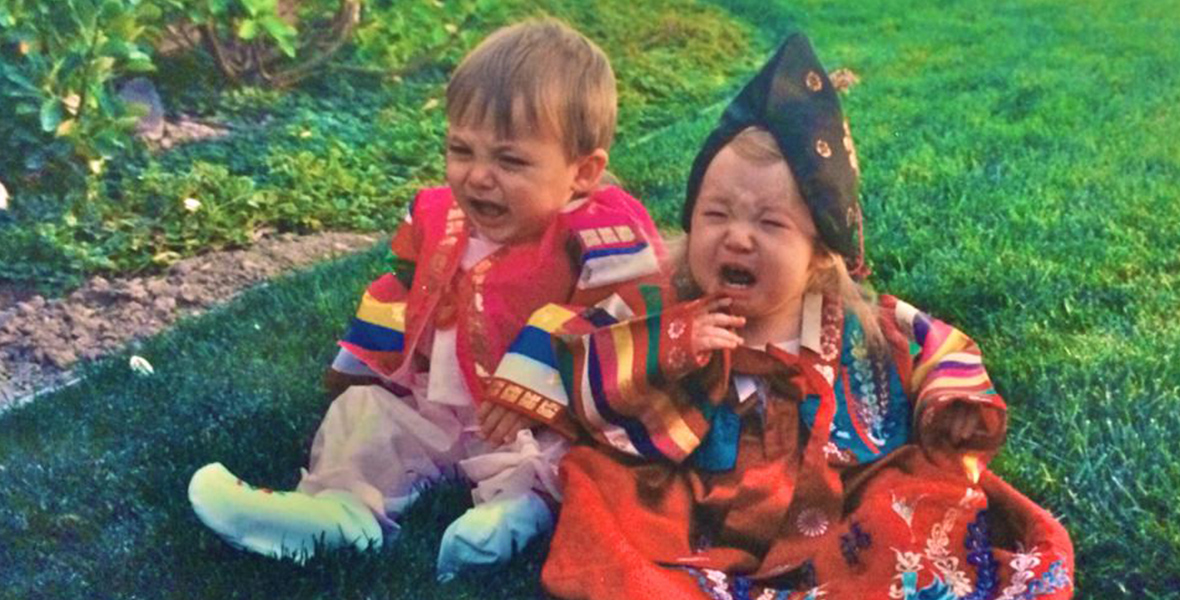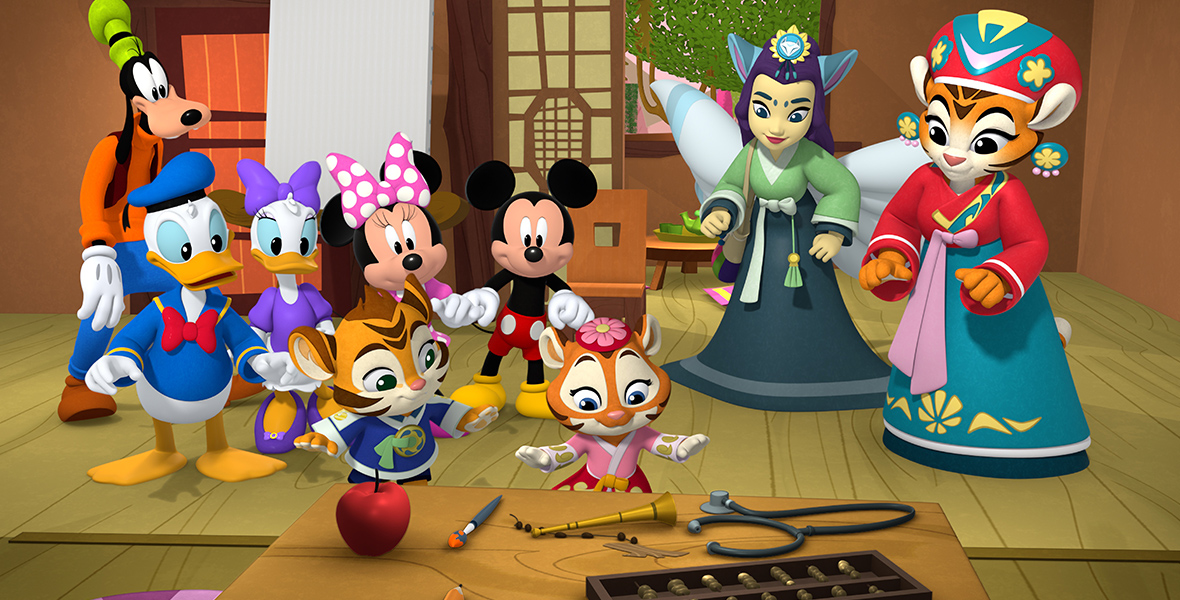By Emily Hewitt
This year, Disney Junior’s Mickey Mouse Funhouse is celebrating Mickey’s birthday in a truly memorable way—with an all-new episode entitled “The What About Me Birthday”, written by half-Korean staff writer Hanah Lee Cook. The episode premieres Friday, November 17, the day before Mickey’s actual birthday on November 18.
“I knew we wanted to do some birthday-related episodes,” Cook recently told D23. “Mickey’s birthday is a huge thing. And even though this episode is not [exactly] about Mickey’s birthday, I know personally from going to the Parks that Mickey Mouse loves celebrating birthdays!”
In this episode, Mickey, Minnie Mouse, and the whole gang are invited to tiger Ae-Che’s first birthday party, which includes a Korean Doljabi ceremony—in which a child picks an object from a table that suggests what the child might be when they grow up.
“The traditional items are generally an apple or some kind of fruit to represent health; coins represent good fortune; a paintbrush to represent an artist; and a pencil to represent being a writer or a scholar,” Cook continues. “I have been to a couple of Doljabi ceremonies for my younger cousins, where they have included a stuffed animal, which could represent that they'll be a veterinarian, or a stethoscope, [so] maybe they'll be a doctor.”

Cook was inspired to write the episode by her little brother's Doljabi ceremony. At the time, she was jealous of her brother for getting all the attention; similarly, in this episode, Ae-Che’s brother Kyung Won is jealous that his sister is the ceremony’s focus.

“There's actually a photo of my family gathered around,” explains Cook, chuckling, “Everyone's really happy, and my dad is holding a little four-year-old Hanah having a meltdown; really upset!”
Cook hopes this episode shows siblings—or even friends—that they need to allow their loved ones to have their special day, just as they once had their own special day too.
Something else Cook vividly remembers from Doljabi ceremonies past is taking photos; in the episode that’s represented by the birthday girl posing for a portrait.
“I thought including the portrait aspect would be a fun way to reference that part of it, because I remember that took up a significant amount of time,” Cook admits.
All told, the episode mirrors her experience with Doljabi ceremonies quite directly. Ae-Che picks a paintbrush, meaning she will be an artist—and there is a photo showing that her brother picked an apple at his ceremony, meaning he will have good health. In real life, Cook picked the paint brush, and her brother picked the apple.
“[My family] was surprised that I ended up not being able to draw,” says the writer.
Many aspects of the episode are based on Cook’s real life. Each of Cook’s parents is half Korean, so she has two Korean grandparents, one on each side; the brother tiger, Kyung Won, is named after her maternal grandfather; and Ae-Che, which means “loving daughter,” is her grandmother's nickname. These characters also act like the people they are inspired by.
“It was almost a happy coincidence that I needed an older sibling character that really thrived on that attention and was a little confused when the attention was not on him,” Cook said. “Because that is exactly my grandpa's personality... My grandmother is very sweet, very demure… [but] she was also a very strong, fierce Korean woman. And she was absolutely a devoted daughter, a devoted sister, which I hope comes across in the show.”
The most challenging part of the process was deciding what mythological creature to make the characters since Korean mythology is vast—hence why the tigers live in The Land of Myths and Legends.
“Luckily our wonderful designers and artists made our versions of those tigers much cuter than they were in the illustrated books that I grew up with,” Cook said.
Korean goblins or Dokkaebi were also included in the episode, as another ode to Korean mythology. In the episode, they pull Korean radishes (which hold a special place on Cook’s pallet) from the ground.
“I was a super picky eater, and most kimchi is made with cabbage,” Cook explains. “I was very not into eating cabbage… So the first kimchi I ever tried was radish kimchi... and that was the first type of kimchi I actually learned how to make.”
Cook appreciates Disney for giving her free range to add in these special, personal odes to her life and culture.
“I did not grow up with too many representations of Korean culture,” she acknowledges. “So, it's my own little way of ‘paying it forward’ to the next generation. It's also an amazing opportunity for kids who are not Asian, or do not come from Korean culture, to learn about other traditions.”



